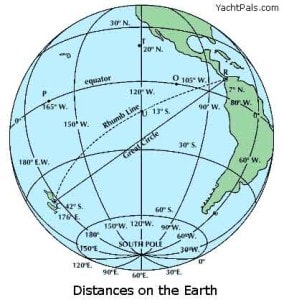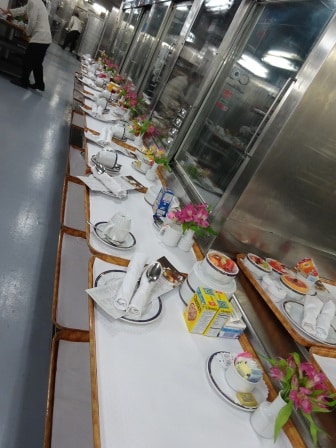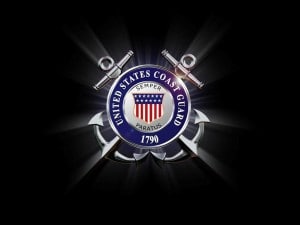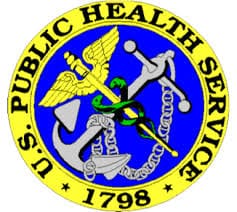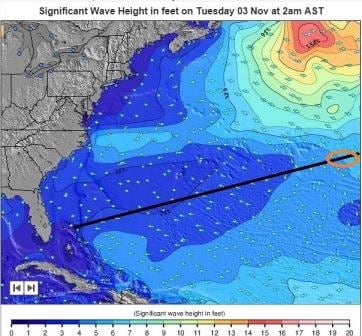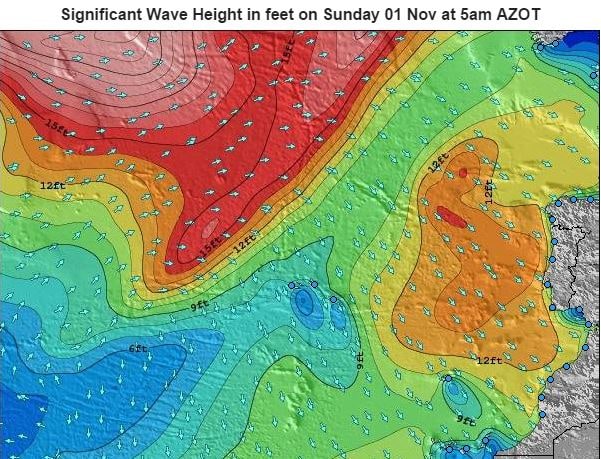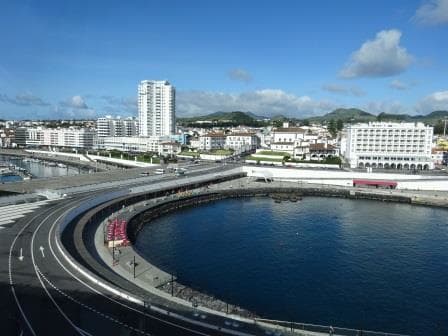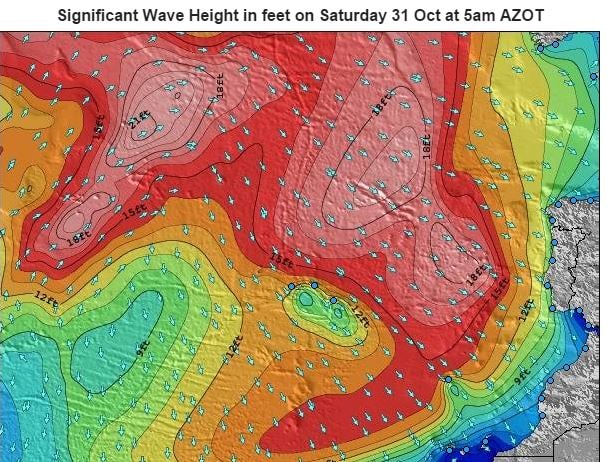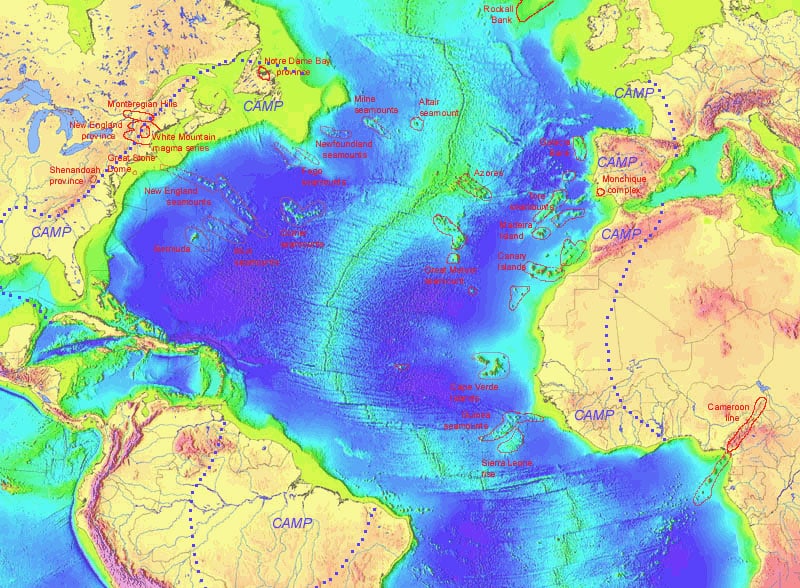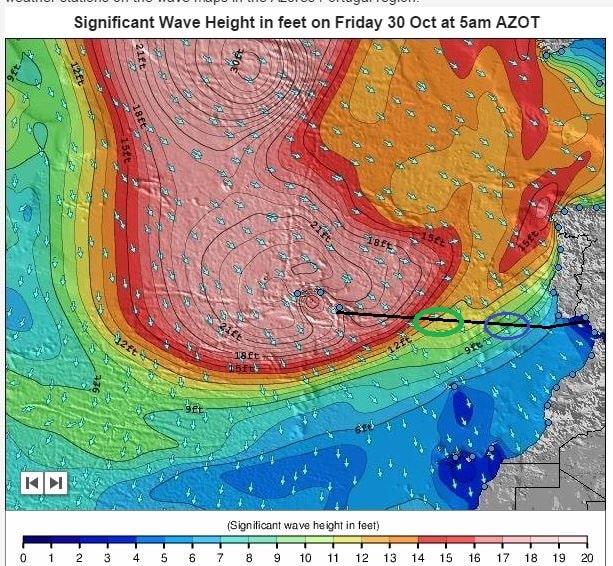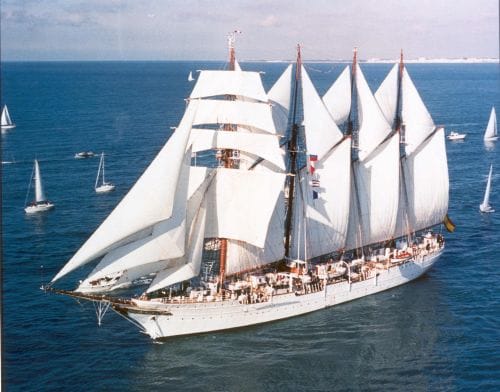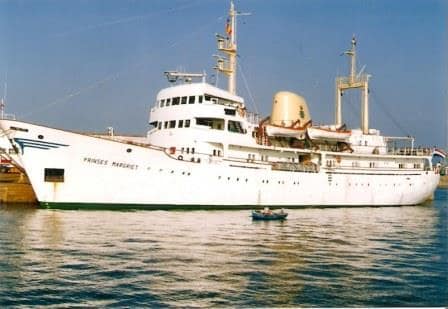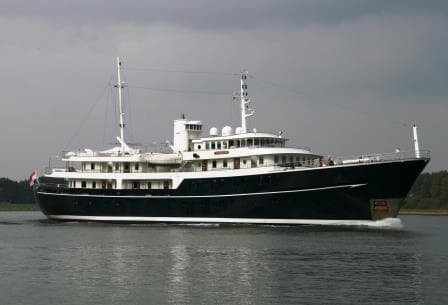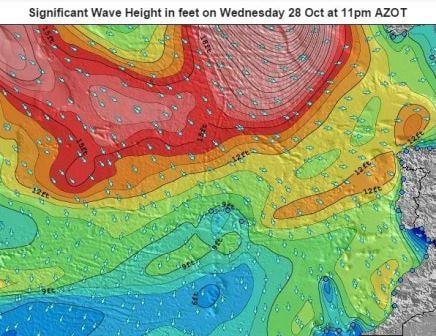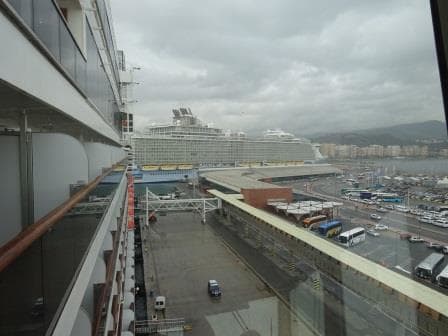Since our cruise began we have gone from GMT + 1hrs, to today’s GMT -4 hrs. as last night we had another hour back on the clock. Giving time changes is something which is done in conjunction with the on board activities. If we sail between two countries then we have to do it during the night in between but on a crossing it does not matter as long as we arrive on the correct time at our next port of call.
 As I mentioned in a previous blog we gave an hour back during the night of the Filipino crew show. The crew could do their show and did not lose any sleep over it. A strange result of this time change manipulation is the resulting times of sunrise and sunset. Tonight the sun will be setting just after 5 pm which is a bit early for where we are sailing. If the time changes would have been given in a different way then that same sun could also have set on the ship around 7 pm. It is amazing what power a ship’s captain has: being able to let the sun set whenever he wants it to.
As I mentioned in a previous blog we gave an hour back during the night of the Filipino crew show. The crew could do their show and did not lose any sleep over it. A strange result of this time change manipulation is the resulting times of sunrise and sunset. Tonight the sun will be setting just after 5 pm which is a bit early for where we are sailing. If the time changes would have been given in a different way then that same sun could also have set on the ship around 7 pm. It is amazing what power a ship’s captain has: being able to let the sun set whenever he wants it to.
There are many variations in giving time changes. Some companies such as Carnival and RCI do not give time changes at all during their Caribbean Cruises. They simply stay on Miami time and it works well. It saves giving that dreaded hour forward which really empties the ship out. Holland America’s tradition is to do time changes, also on these 7 day or 14 day cruises. (NCL does the same) Why I really do not know, it is a sort of tradition I suppose. I tried it once, not giving any time changes at all, while on the Veendam when we were doing 7 and 14 day cruises from Tampa and it did not make any difference to the guests. Nobody came back late on board and nobody got confused by a church tower clock while ashore. In a way it was even easier because when they mingled with guests from those other companies, they were at least all on the same time. Both in the bar ashore as well as coming back to the ship.
Here on board we go the hours back and forward at 2 am. in the morning. Again in between ports you have not much choice to do any other time. On crossings I personally prefer to do it at lunch time or 1 pm. During the Voice from the Bridge I would just announce, we going 30 minutes forward or 30 minutes back if it was a crossing or a cruise with several sea days. Again it worked well. The guests did not forget their clocks as it was announced over the P.A system. They did not go to bed earlier as there was no hour forward. One of the Hotel Directors who I worked with had made a whole study about it; to see what revenue wise was the best solution. Night time or day time. His findings (although the sampling was not over that many voyages) for revenue turned out better to go an hour back during the night and to go 30 minutes forward during the day, depending what sort of time change was needed. But as our guests are in general not party animals, the effect on the On Board Revenue did not result in breathtaking increases.
The crew liked the 30 minutes forward better at lunch time than the hour forward at night, as now they did not lose any sleep but only 30 minutes of break time in the afternoon. But with so many people, and so many views I do not think there is a perfect time change. We just have to do it to remain in sync with the world.
We still have one hour to go to get the ship on USA and Bahamas time and that hour will be given during the night from 6 to 7 November, which is a Formal night and that helps the guests to decide to stay out a little bit longer as they have dressed up for the occasion anyway. There is also the Captain’s Gold Ball and thus he and the officers will not lose any sleep because of this party either.
Today we had a sunny day again and we nearing tropical temperatures. Noon time reached 26oC or 79oF and I saw the first guest coming by who had definitely spent a little too much time in the sun. A lot of guests forget that sitting on the deck of a cruise ship gives you a double whammy as there is not only the direct sun coming at you but also the sunlight reflected from the water and from the white ships superstructure. Wise people have told me, if you normally would do 20 minutes in the sun for the first day, when on a ship cut it down to 15 minutes or better even less and use a sun block of at least 35 or over. I have solved the issue by not going in the sun at all anymore. Let’s say I learned my lesson in the old days by not listening to the wise lessons of others.
Tomorrow we are looking forward to a similar day as today and during the coming night we will be passing south of Bermuda but we will be too far south to see it.
